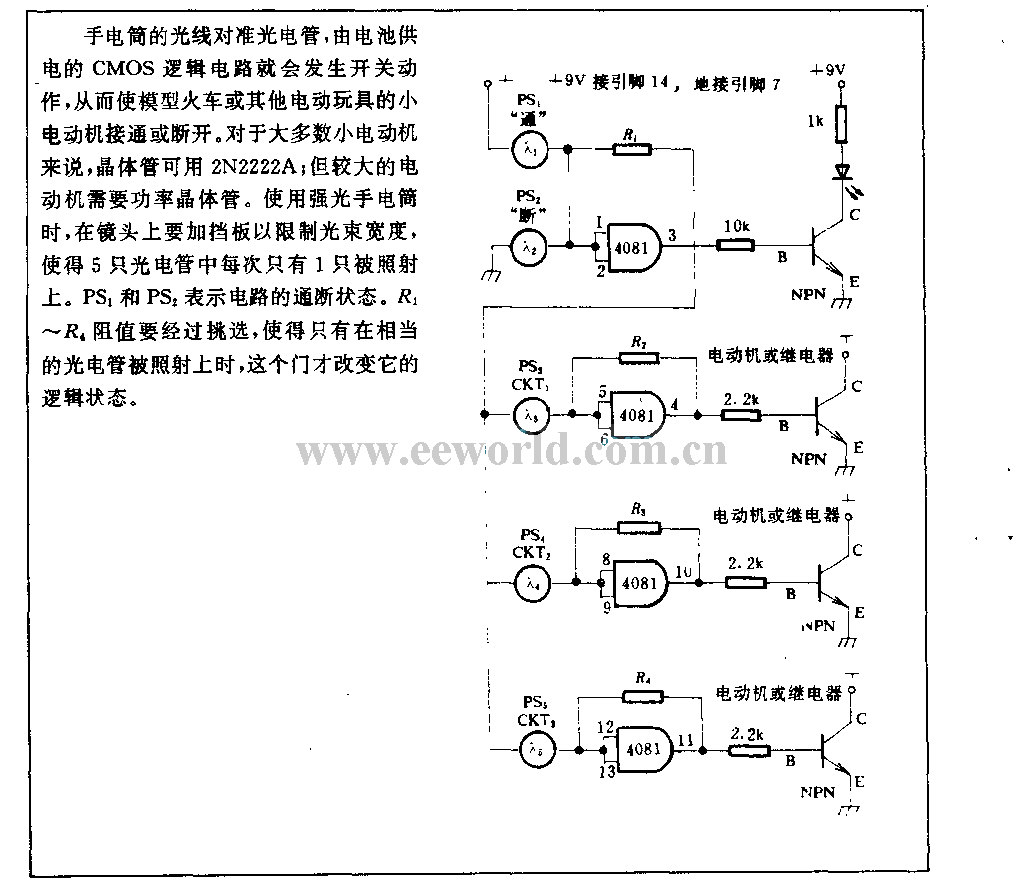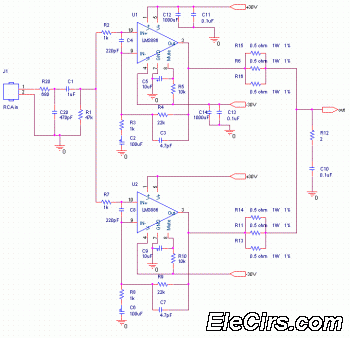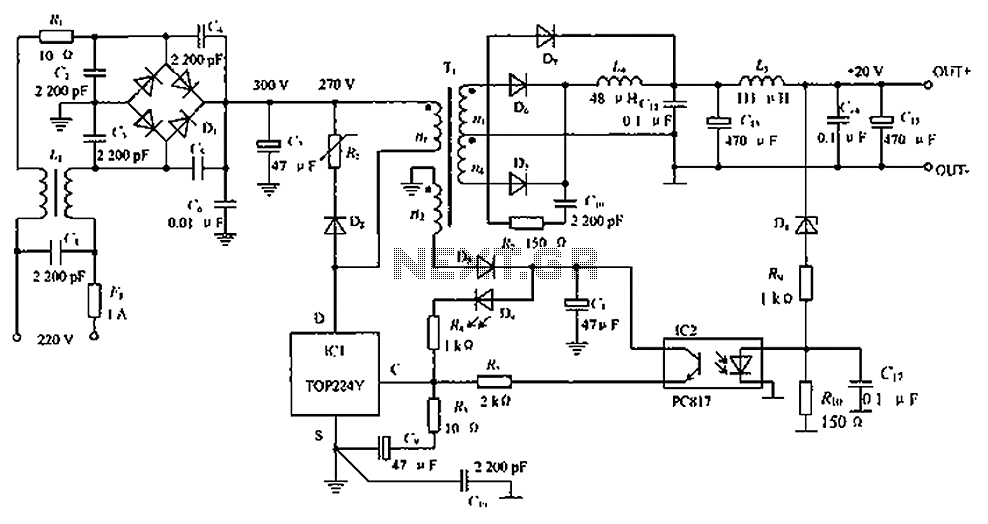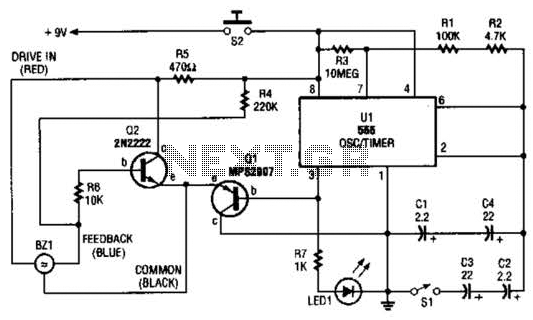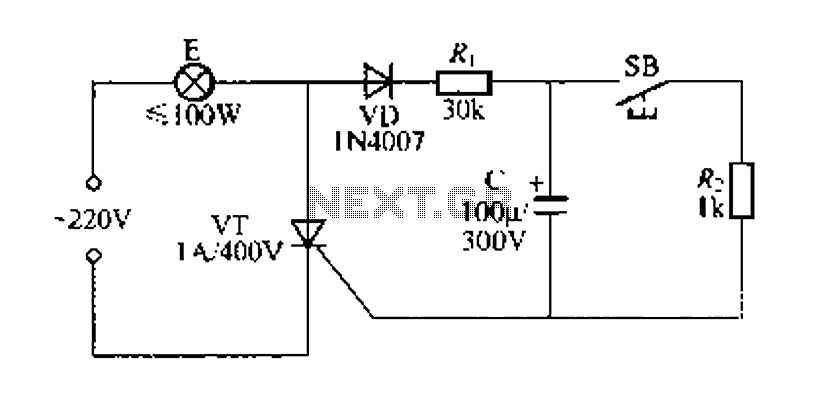
Ultrasonic Dog Repeller Circuit
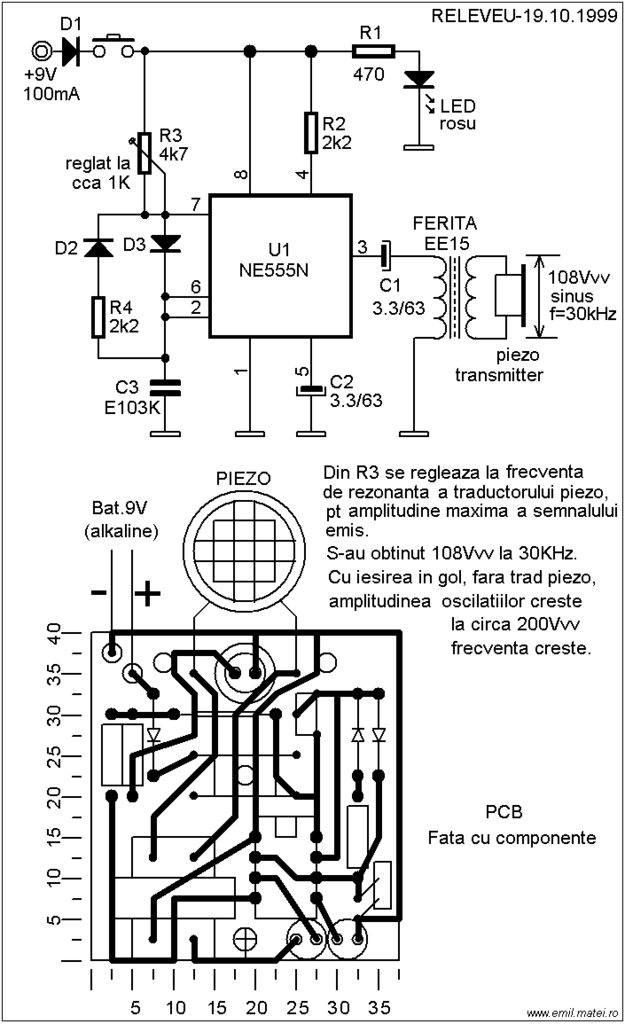
This ultrasonic dog repeller circuit is designed to deter aggressive dogs. It is constructed using the well-known 555 timer circuit, a buzzer, and a small ferrite transformer.
The ultrasonic dog repeller circuit operates by emitting high-frequency sound waves that are unpleasant to dogs but inaudible to humans. The core component of the circuit is the 555 timer IC, which is configured in astable mode to generate a continuous square wave output. This output drives the buzzer, producing ultrasonic frequencies typically ranging from 20 kHz to 40 kHz.
The circuit includes a ferrite transformer, which is used to amplify the signal generated by the buzzer, enhancing the range and effectiveness of the emitted sound waves. The transformer ensures that the high-frequency signals are efficiently transmitted, allowing the repeller to operate effectively over a distance.
Power supply requirements for the circuit can vary, but it is commonly powered by a 9V battery or a suitable DC power source. Proper decoupling capacitors should be included to stabilize the power supply and minimize noise that could affect the performance of the 555 timer.
For implementation, the circuit should be housed in a weather-resistant enclosure to protect it from environmental factors if used outdoors. An adjustable potentiometer can be incorporated to modify the frequency output, allowing customization based on the specific requirements of the user.
Overall, this ultrasonic dog repeller circuit provides a humane method of keeping aggressive dogs at bay, utilizing simple electronic components and well-established circuit design principles.This ultrasonic dog repeller circuit will chase away angry dogs. It is build with the all known 555 circuit, a buzzer and a little ferrite transformator. T.. 🔗 External reference
The ultrasonic dog repeller circuit operates by emitting high-frequency sound waves that are unpleasant to dogs but inaudible to humans. The core component of the circuit is the 555 timer IC, which is configured in astable mode to generate a continuous square wave output. This output drives the buzzer, producing ultrasonic frequencies typically ranging from 20 kHz to 40 kHz.
The circuit includes a ferrite transformer, which is used to amplify the signal generated by the buzzer, enhancing the range and effectiveness of the emitted sound waves. The transformer ensures that the high-frequency signals are efficiently transmitted, allowing the repeller to operate effectively over a distance.
Power supply requirements for the circuit can vary, but it is commonly powered by a 9V battery or a suitable DC power source. Proper decoupling capacitors should be included to stabilize the power supply and minimize noise that could affect the performance of the 555 timer.
For implementation, the circuit should be housed in a weather-resistant enclosure to protect it from environmental factors if used outdoors. An adjustable potentiometer can be incorporated to modify the frequency output, allowing customization based on the specific requirements of the user.
Overall, this ultrasonic dog repeller circuit provides a humane method of keeping aggressive dogs at bay, utilizing simple electronic components and well-established circuit design principles.This ultrasonic dog repeller circuit will chase away angry dogs. It is build with the all known 555 circuit, a buzzer and a little ferrite transformator. T.. 🔗 External reference
Warning: include(partials/cookie-banner.php): Failed to open stream: Permission denied in /var/www/html/nextgr/view-circuit.php on line 713
Warning: include(): Failed opening 'partials/cookie-banner.php' for inclusion (include_path='.:/usr/share/php') in /var/www/html/nextgr/view-circuit.php on line 713
